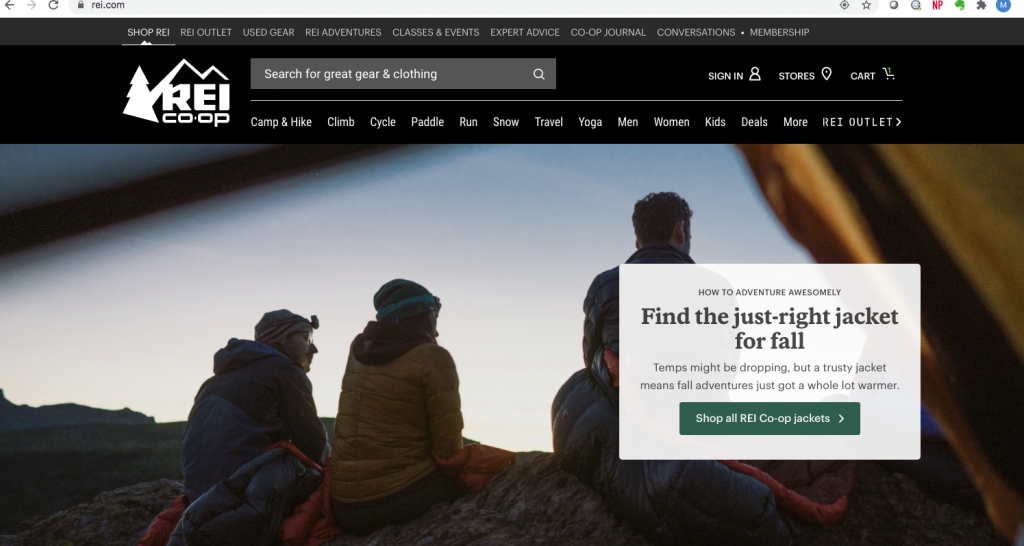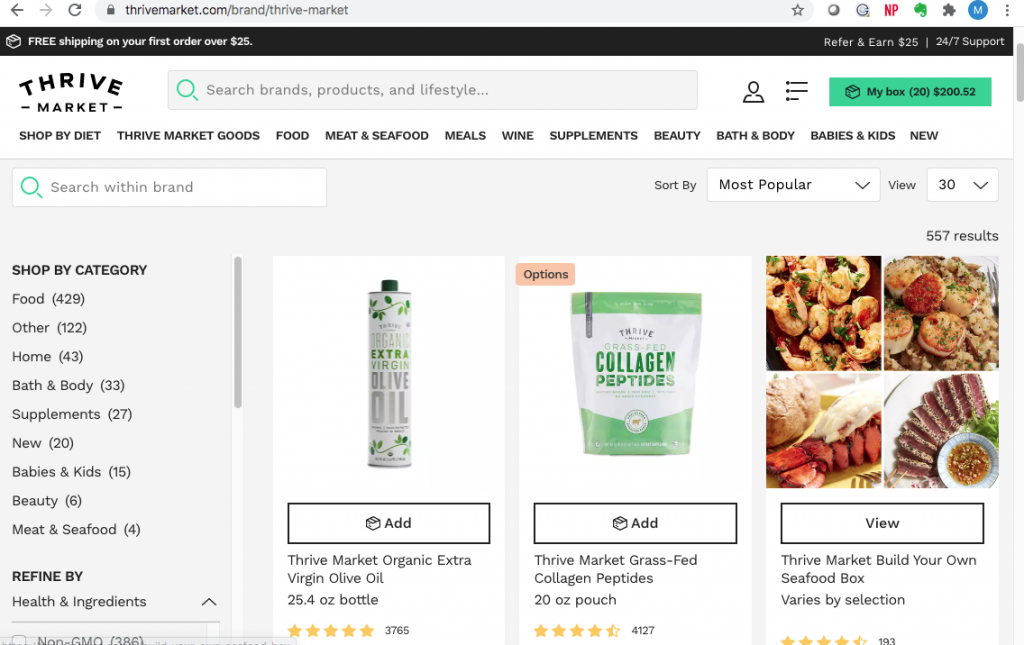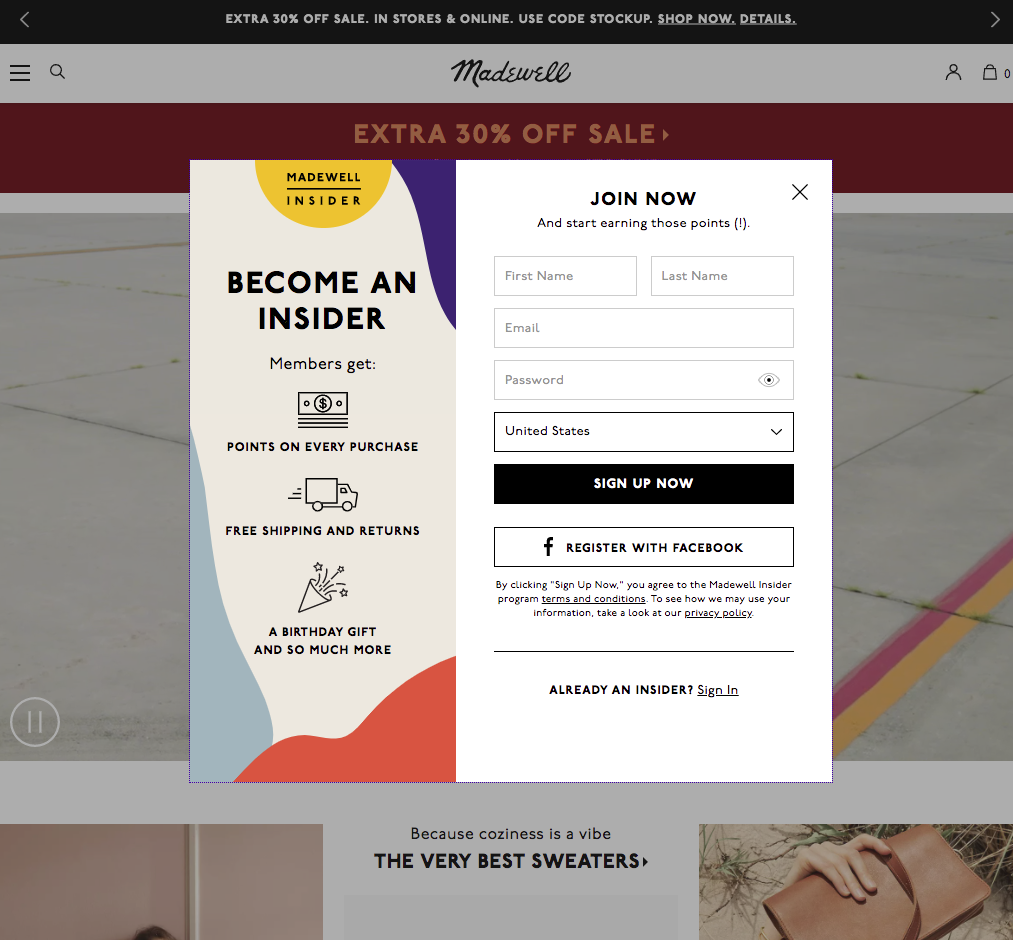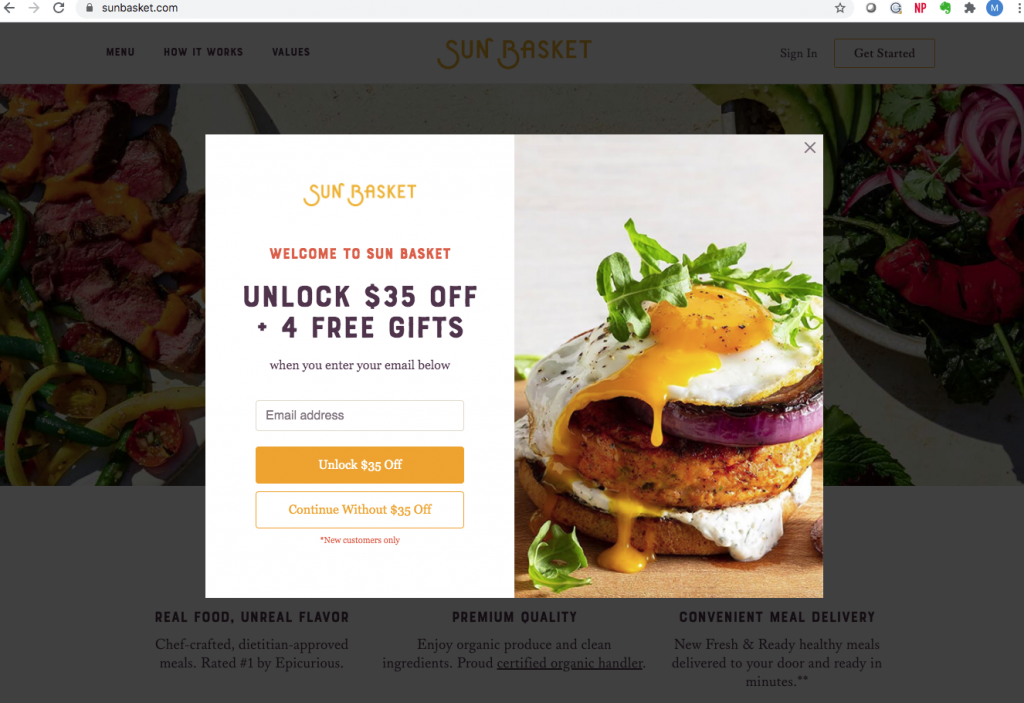Introduction
The concept of E-commerce Personalization refers to individualized online experiences based on user demographics, browsing history, and other personal data. Online retailers achieve this interaction by dynamically serving content to create a unique experience, driven by data, for their shoppers.
The sections below detail the importance of personalizing online shopping experiences. We’ll discuss the science behind the data and how best to apply these insights to your business. We’ll also consider the inherent problems that e-commerce personalization poses for online stores and how best to balance giving online shoppers a unique experience and being mindful of their privacy threshold.
As you navigate through The Ultimate Guide to Personalizing the E-Commerce Shopping Experience, feel free to jump to the sections that pertain most to your business and make sure to check out our free download of tips below.
- The Power of Personalization
- The Science of E-Commerce Personalization
- Personalization Goals for E-commerce Retailers
- Personalization Strategies
- Conclusion
1. The Power of Personalization
Imagine walking into a local “mom and pop” clothing shop. You like this store because the clothing is of good quality, the style is suited to your tastes, and you can make purchases for the whole family all in one place. The shopkeeper knows your name and remembers your children – their ages and preferences. She greets you like an old friend; you chit-chat about the weather and upcoming holidays. She then inquires as to the health and well-being of your family. She tells you about her new stock and picks out a few specific pieces that she thinks you’ll be interested in—in the colors and sizes she knows you prefer. She hangs a fancy outfit in the fitting room she has set up for you, possibly for a holiday party you mentioned. She also points out the sale rack and lets you know that she can provide additional suggestions or sizes as needed. It all happens in real time, responsive to the shopper’s needs.
Perhaps this scenario is why “brick and mortar” retail is still around. It’s challenging to recreate this type of personalized experience online. Shoppers, however, expect online retailers to try their hardest. In fact, online stores that don’t personalize content risk losing shoppers.
Source: Accenture
Source: Smarter HQ
Still not convinced? Personalization increases Average Order Value, promotes customer loyalty, boosts satisfaction, and increases online retailers’ annual revenue. The data are quite compelling!
- 74% of shoppers feel frustrated when e-commerce site content is not personalized.
- 85% of online consumers are influenced to make purchases when homepage content is personalized. This number jumps to 92% when personalized recommendations in shopping carts.
- 44% of online customers are likely to become repeat buyers after a personalized shopping experience.
- 19% increases in sales are reported by in-house marketers who personalize their web experiences (and who can quantify the improvement).
- 54% of executives report that they exceeded annual revenue targets when committed to personalization, compared to only 15% of those not as committed to the tactic.
Source: Instapage
2. The Science of E-Commerce Personalization
How exactly does E-commerce Personalization work? Which metrics work best, and how is the data gathered and analyzed?
The most common E-commerce Personalization strategies rely on information from four key content areas:
Consider the e-commerce personalization examples below.
Demographics
Demographic information pertains to any personal characteristics of your shopper. These include gender, age, ethnicity, income level, education, employment, etc. You can also include geographic data such as physical location (based on IP address or mobile location), weather in that location, and local holidays in this category. Any distinguishing features that help segment your shoppers can count as demographic data.
An example is this geo-targeted, home page CTA from REI: “Find the just-right jacket for fall.”
Source: REI
Behavior
Your shoppers’ actions on your e-commerce site constitute their behavior. Their current actions, combined with their browsing and purchase history, serve to paint a picture of where their interests lie and what types of purchases they may make in the future.
Thrive market collects a tremendous amount of user preference data when they onboard new shoppers. Then they purposely serve product recommendations based on both those preferences and recent browsing behavior:
Source: Thrive Market
Aggregated Data
When a first-time visitor accesses your e-commerce site, there’s no browsing or purchase history to inform personalized product suggestions. However, previous customers’ actions can help fill in the gaps if they correlate to the user’s current site behavior. Don’t forget, just being a first time visitor is a segment that’s personalizable!
First-time visitors, who tend to be warier of purchasing from a new brand, can be greeted with offers such as:
Become an Insider!
Unlock $35 Off + 4 Free Gifts (for new customers only)
At Madewell, first-time visitors are offered membership in order to receive loyalty points, free shipping, and birthday gifts in exchange for signing up for the loyalty program.
Source: Madewell
At Sunbasket, signing up to receive email marketing messages will give new customers $35 off and free gifts:
Source: Sunbasket
Once you’ve been able to capture data about the shopper after their first session, you can also consider returning visitor variables such as length of visit, frequency of visits, number of pages visited, and more. With these data, as your personalization capabilities become more sophisticated, you can even adapt the experience in real time based on what shoppers are doing on your site right now.
Retailer-Specific Variables
Retailers may want to offer certain products or services regardless of shoppers’ demographics or behavior. For example, they may have preferred product categories or an excess of specific inventory, etc. These variables should also be taken into account when determining the personalization strategy for your e-commerce business.
For help applying these e-commerce personalization examples to your own business, consult our free personalization checklist.
3. Personalization Goals for E-commerce Retailers
Personalizing the shopping experience on an e-commerce site is a massive endeavor for any retailer. It’s akin to the adage of trying to eat an elephant; it works best in bite-size chunks.
What Are Your Goals?
Rather than trying to tackle a vast, amorphous task all at once, it’s better to specify what you would like to accomplish and work towards those goals. Be careful here, though—don’t let minor objectives, such as clicks on your website, overshadow fundamental goals, such as increasing customer satisfaction. Your goals can and should be overarching, all-encompassing milestones for your business. Examples can include:
- Increase customer satisfaction
- Build a robust social community
- Increase profitability by 20%
How can personalization help your e-commerce business reach those goals? Make a list here as well. For example, how can you increase customer satisfaction?
- Provide personalized recommendations based on previous interests
- Decrease friction by serving country-specific size options (ex: UK size choices for shoppers located in London)
The point is to break down your goals into actionable items, each achievable by implementing new practices or technology.
What Are You Capable of Right Now?
Before making a slew of costly changes, evaluate the means that are already at your disposal. What data do you already have; what are your sources? How can you turn this data into customer profiles that can ultimately provide your online shoppers with a meaningful and personal experience?
Don’t discount the data you already have as old or irrelevant. Every past purchase (the items themselves, colors, sizes, order value, date purchased, etc.) is a gold mine of information.
What Do You Need to Add to Accomplish Your Personalization Goals?
If your business already boasts reliable data collection and clever analysis, followed up by pointed product offerings and marketing – skip ahead to the next section. However, chances are there’s a breakdown in at least one (or all three!) of those areas.
Whether you feel like you don’t have enough data or are drowning in data, there are many software solutions available to online retailers to help collect, interpret, and use information. Machine Learning and Artificial Intelligence are starting to play a greater and greater role in personalization
Take your time evaluating potential software solutions. It may be worth it to pay a higher fee if it increases the usability of the product. Alternately, don’t get roped into a system that’s too intricate to be useful. Find the balance that’s right for your e-commerce business.
What Are Your Success Metrics?
How will you know if your strategies are working? Your key performance indicators will differ depending on your original goals. However, in general, how users engage with your website will indicate whether your personalization goals have the desired effect on your shoppers.
Three core metrics can go a long way in helping you measure your company’s progress:
4. Personalization Strategies
Customer-Driven Goals
Understand your individual customers. What are their needs, and how can you meet them? Once you’re clear on who your customers are, you can design the shopping experience and create the content to engage your visitors.
Remember, the ultimate goal of personalization is to serve the customer better. Shoppers are demanding this sophistication from brands – 88% expect online stores to provide personalized product recommendations. Empathizing with shoppers is critical. Would you prefer to browse random products or thoughtful, relevant suggestions? Product recommendations based on interest and need show that you respect your shopper by not wasting their time with ill-fitting or inappropriate options.
Product Recommendations
Offering a few related products displayed in each product page’s footer doesn’t constitute properly executed personalized recommendations. The whole point of providing product recommendations is to anticipate your shoppers’ needs and increase their purchase probability. Use your collected data (examples: shoppers’ preferred price, brand, colors, etc.) to build recommendations based on demonstrated interest.
A successful product recommendation strategy can increase the average number of items in shoppers’ carts by 68% and increase conversion rates by a staggering 320%.
What Data Should You Use?
These results aren’t achieved by crossing your fingers and hoping you can read your shopper’s minds. The core of your product recommendation strategy should be segmentation based upon actual user data. Your customers display characteristics that you can group into categories that share common features.
The possibilities for segmentation are endless – it can help narrow it down to groups that somehow pertain to the items you sell. For example, if you sell clothing, it’s helpful to know where in the world your shopper is located, so that you can recommend winter coats or bathing suits based on their season. If you sell mattresses, it’s useful to understand their preferred price range and bed size. No matter what the category, you can make inferences on data that determines where they are in their customer journey.
Some other examples of segments include:
- First-time visitors
- Parents shopping for children
- Mobile shoppers (vs. desktop shoppers)
- Consistently views products in the $200-$350 range
- Session browsing history of blue area rugs
When analyzed correctly, this data can help your business make product recommendations that better suit your shoppers. It’ll also help you target the right audience in paid ad campaigns, keyword searches, social media, and the like.
When to Ask for Help
- Do you feel like you are missing opportunities to meet your shopper’s needs?
- Are you collecting irrelevant data?
- Do you have enough data to make informed inferences about your shoppers?
- Do you have high-value data but are unsure how to use it?
- Are your current personalization strategies missing the mark (based on unmet key performance indicators)?
If you answered “yes” to any of the above questions, it’s probably time to bring on a new or change your existing e-commerce personalization solution. You’re a retailer; your business is connecting shoppers to products.
Personalization is yet another “hat” that online retailers are expected to wear, and it may be beyond the scope and means of your business to collect, store, organize, analyze and leverage the massive amount of user data at your fingertips.
The payoff is one-on-one customer relationships that drive higher conversion rates, longtime loyalty, and overall customer satisfaction.
How Much Is Too Much?
The relationship between personalization and privacy can become murky quite quickly. It’s no secret that everything one does online is tracked and recorded. However, most of us choose not to pay too much attention to this. We mostly like the benefits of e-commerce personalization and understand that when we place an order with a retailer, we give our implied permission for that retailer to use the information about what we purchased to satisfy our future needs better.
It’s unexpected personalization or excessive hyper-targeting that risks giving shoppers pause. This uncanny feeling can occur when retailers try to make predictions based on shopper behavior, with the outcome feeling like a privacy violation.
An infamous example is when Target tried to predict if shoppers were pregnant based on their purchase history. An upset father contacted the retail chain to inquire why his teen daughter was receiving pregnancy coupons. Machine learning can make some unfortunate inferences. This example highlights a significant risk of personalization, but it also helped shift the conversation around personalization from increasing sales to enhancing the customer experience.
Another way for retailers to shoot themselves in the foot is to serve so much personalized content that it prevents discovery. It’s essential to strike a balance between anticipating shoppers’ needs and trusting them to search out what they are looking for.
A good rule of thumb for retailers – if it feels wrong, it probably is. Again, retailers should empathize with their shoppers to determine an appropriate privacy threshold – and respectfully don’t cross it.







